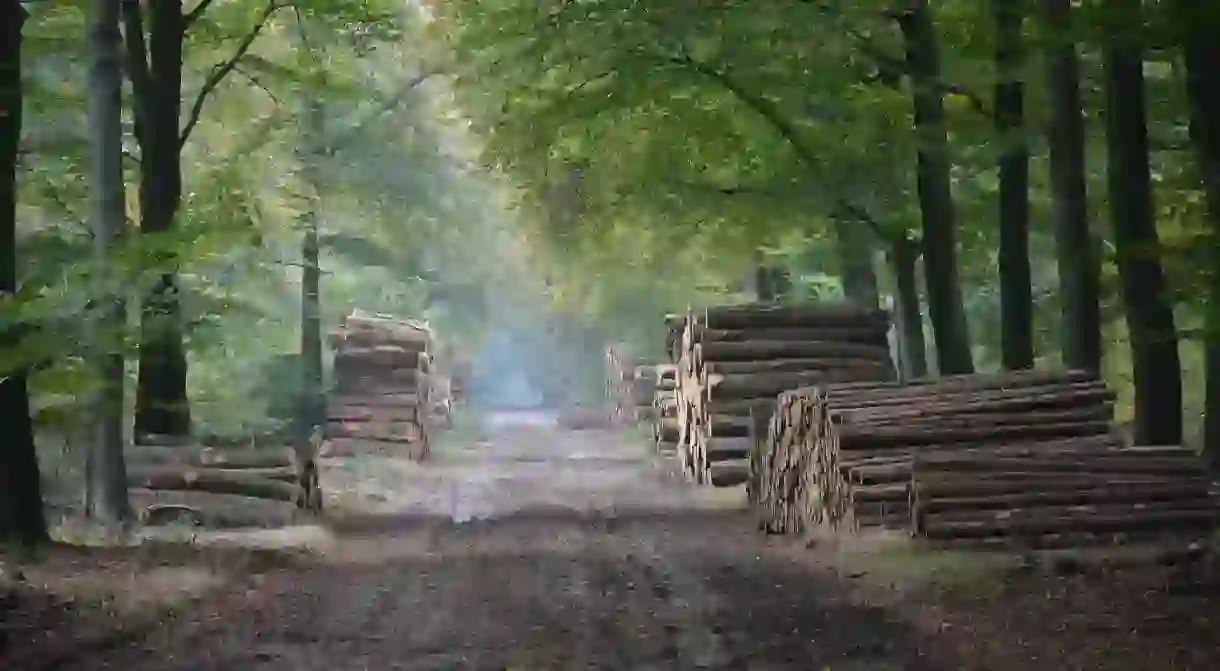Why the Best of the Netherlands is Found Beyond Amsterdam

Although there is a lot to be said about spending a long break exploring Amsterdam, to discover a fuller extent of Dutch culture travellers should definitely consider looking further afield in the Netherlands. The country’s smaller cities each have their own distinctive charms, which often rival or surpass Amsterdam in certain ways, while the Dutch countryside is among the most beautiful and least explored in Europe.
Utrecht
Utrecht’s rich history is epitomised by its town centre’s tallest building, the Dom Tower, which has stood proudly above its cobbled streets and winding canals since the 14th century. St. Martin’s Cathedral was originally planned to accompany this monumental structure, but was eventually built beside the Dom Tower instead. The city has always acted as the religious heart of the Netherlands and contains many other magnificent ecclesiastical buildings which mainly date back to the High Medieval Period.
Furthermore, Utrecht’s university has an enormous student body meaning that many of its cafés, bars and clubs are geared towards the younger generation. Several large music and arts festivals also take place in Utrecht annually, including Le Guess Who? which focuses on international, alternative rock, electronic dance music, and hip hop.

The Veluwe
Herds of wild boar, deer and horses roam freely around the Veluwe and have lived undisturbed in the forest for generations. In fact, the Veluwe formed during the last ice age when several massive glaciers collided and forced sand deposits around the Rhine upwards, subsequently creating a large ridged terrain. Over the years, many different types of habitat have developed upon this rich landscape and the Veluwe currently contains numerous woodlands, heaths and sand dunes.
Apart from its natural beauty, the Veluwe also encompasses over 21 municipalities that are spread over the western part of Gelderland province. A village inside its borders, called Otterlo, is famed for its outstanding museum, which possesses one of the largest collections of Van Gogh paintings in the world, as well as a phenomenal sculpture garden.

The Northern Provinces
The Netherlands’ northernmost territories are divided over two ancient provinces called Friesland and Groningen. These regions are the furthest away from Amsterdam and the Randstand’s influence and were among the last areas to fall under the control of the united Dutch government. Due to these historical conditions, Groningen and Friesland developed somewhat differently than the rest of the Netherlands, making them truly unique parts of the country.
Friesland, for example, actually has its own official language called Frisian which shares many grammatical roots with English, whilst Groningen was a prominent trading power during the height of the Hanseatic League and was recognised as a semi-autonomous state. Both provinces are renowned for their large national parks and beautiful coastlines that look onto the infamously tempestuous north sea.

Rotterdam
Although Rotterdam and Amsterdam famously share a friendly rivalry due to their comparable size and cultural significance, the cities are actually very different. Unlike the Dutch capital, Rotterdam has space, and is renowned for its wide, modern urban planning and glorious, high-rise buildings. Moreover, Rotterdam was almost completely rebuilt after World War II and rapidly became an impressive economic centre during the 20th century.
As the largest port in Europe, Rotterdam has always attracted international and Dutch migrants and is possibly the most culturally diverse area of the Netherlands. In the 1990s, the city increasingly became associated with night life and is still famed for its excellent clubs, bars and pubs.

Limburg
For most of its history, the province of Limburg was controlled by various political groups that desired to maintain a stronghold in the heart of the Low Countries. Because of its strategic importance, Limburg has been influenced by many European cultures and languages. The province’s capital Maastricht contains 1677 national heritage sites and is recognised as the official birthplace of the European Union.
Unlike the rest of the Netherlands, Limburg’s geography is defined by its hilly landscapes and the province contains the only mountain in the entire country. Its rustic countryside is covered in green meadows and ancient forests that trail into the northern limits of Belgium.

The Wadden Islands
The Netherlands’ northern coastline is protected by five inhabited islands called Texel, Vlieland, Terschelling, Ameland and Schiermonnikoog. Large parts of this archipelago are protected as national parks due to their thriving natural landscapes which are populated by a diverse variety of fauna and flora. Ferries frequently travel to each of these islands from the Dutch mainland and mostly sail via northern Friesland.
People have lived on this rugged shoreline since antiquity and the islands have served as important territorial outposts for centuries. Farming and fishing are still very prominent on the Wadden Islands and the archipelago is substantially more rural than the rest of the Netherlands, making the islands perfect for nature lovers.














